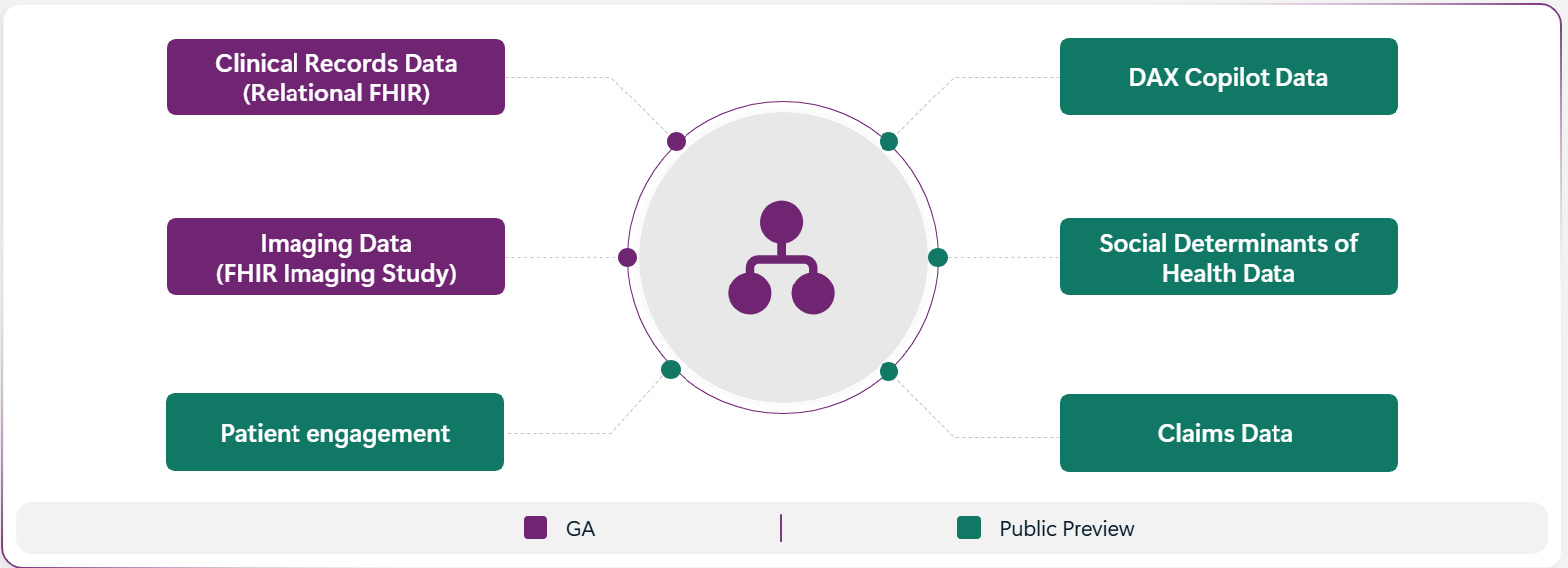Healthcare data model
A key feature of healthcare data solutions is the healthcare data model. The data model is comprehensive and well-known and can support many business domains in healthcare, such as clinical, administrative, financial, and social. The healthcare data model provides a common data language that helps data analysts, data scientists, and developers collaborate and build data-driven solutions that improve patient outcomes and business performance. The healthcare data model provides a unified, validated, and enriched version of the healthcare data that healthcare organizations can use for downstream analytics.
The healthcare data model supports the analysis of Fast Healthcare Interoperability Resources (FHIR) clinical data through the use of traditional SQL-based tools, such as T-SQL and Spark SQL. These tools provide FHIR data in a relational form.
The healthcare data model is a composite model that uses standards where they exist, such as FHIR and DICOM. It offers a comprehensive schema for those domains where no standards exist, such as patient engagement data. In addition to supporting the breadth of FHIR data, the model goes further by supporting the following data:
Medical imaging (DICOM)
Patient engagement data
Genomics data
Social determinants of health (SDOH)
However, the core is designed to persist FHIR data in a relational format by using delta parquet for enhanced efficiency. To achieve this goal, FHIR resources are made available as tables and columns in the healthcare lakehouse. This relational format supports the industry SQL on FHIR initiative. For data domains that the FHIR standard doesn't cover, the system uses the schemas from Azure Synapse database templates, which support bringing nonclinical information, such as patient engagement data, to the core patient profile.
The data model supports use cases, such as multimodal clinical research with Observational Medical Outcomes Partnership (OMOP) analytics.
